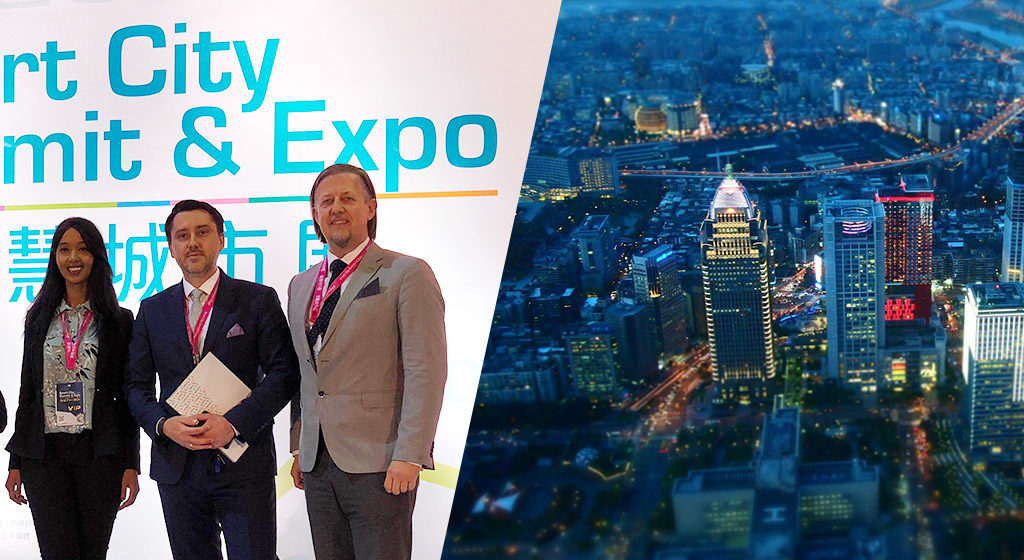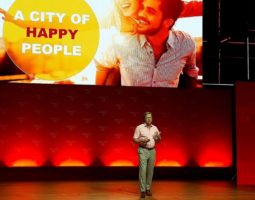On 27-30.03. I had the pleasure of taking part in the Vth edition of Smart City Summit & Expo and Major’s Summit in Taipei. It’s an international conference and trade fair, and the largest IoT and Smart City event in the whole Asia. The event was organised on a large scale, mainly to promote Taiwan and Taipei as Smart Cities. The opening ceremony took place with the participation of President Tsai Ing-wen and in the presence of a half of ministers from her government in the spotlight of media from the whole world. Ms President presented awards for the smartest solutions to selected cities from different parts of the world. The biggest number of awards was presented to Taipei City Hall for interesting solutions in the areas of smart government, security and transportation. I invite you to read my report of this event full of inspirations and trends. I will certainly return there in the next year.
Polish trade mission under the leadership of Maciej Bluj, Vice-President of Wrocław, in the company of Hibaq Jama, a councillor for Bristol City Council.
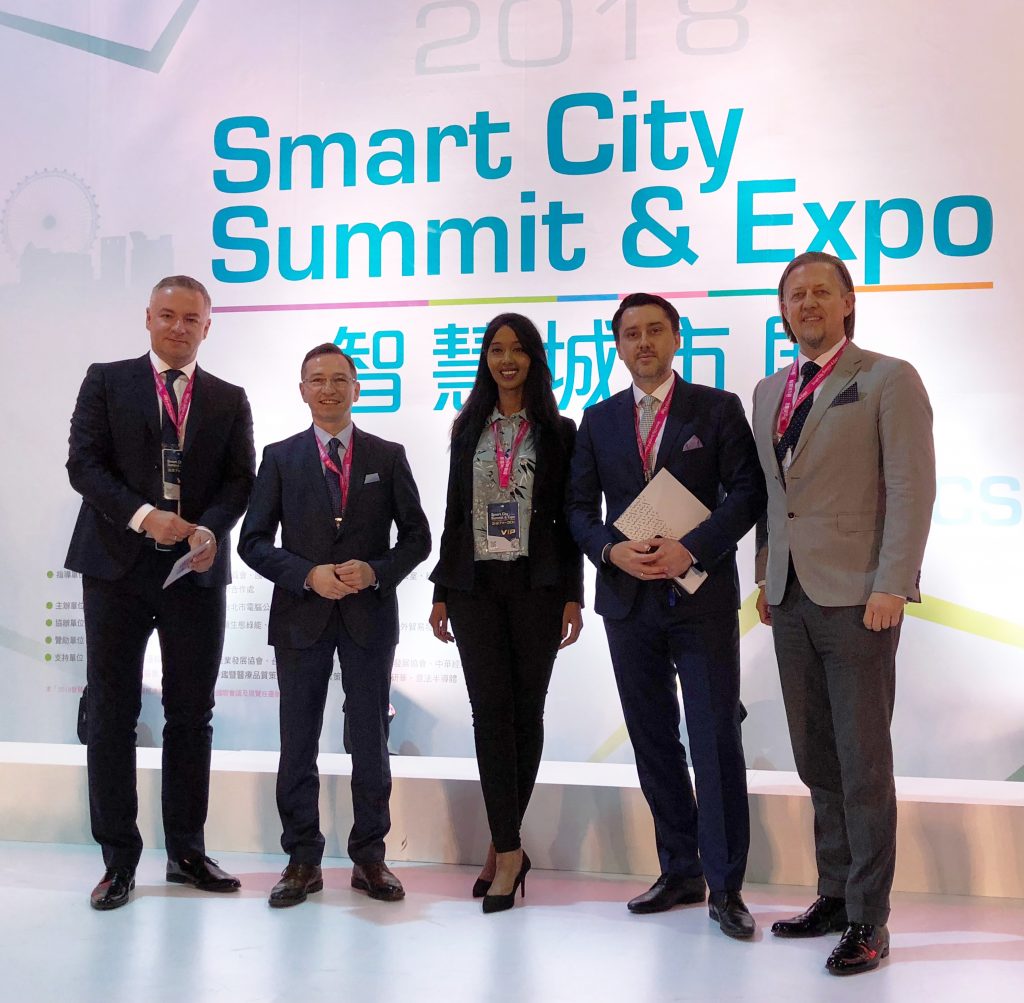 source: private archive
source: private archive
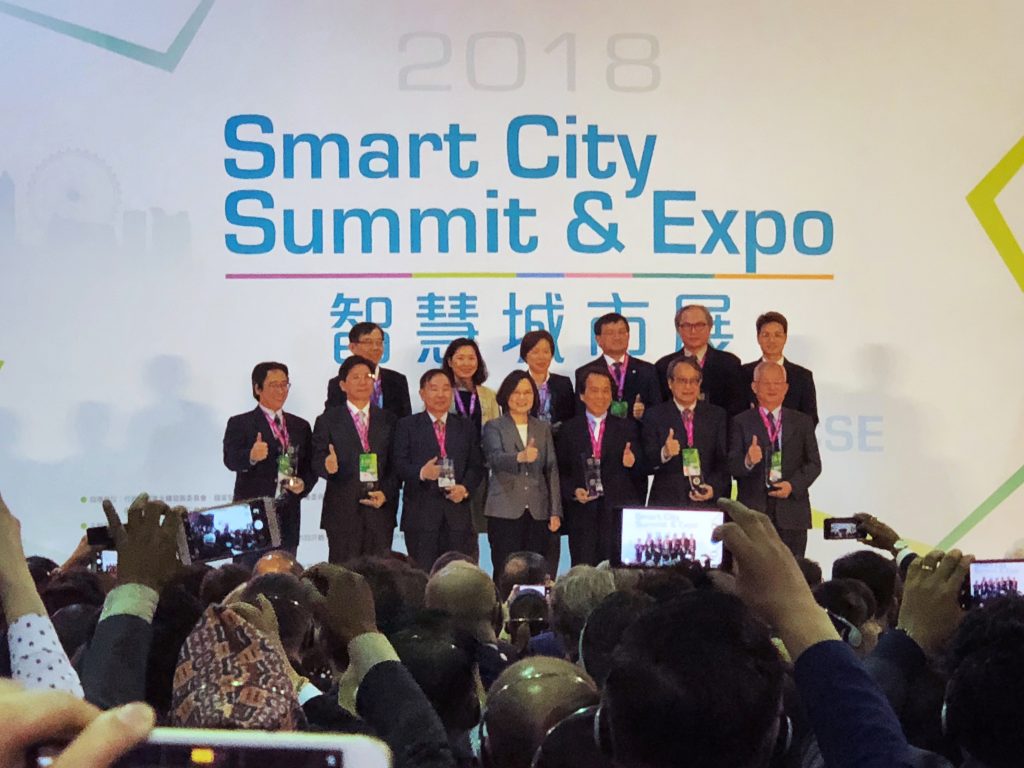 source: private archive
source: private archive
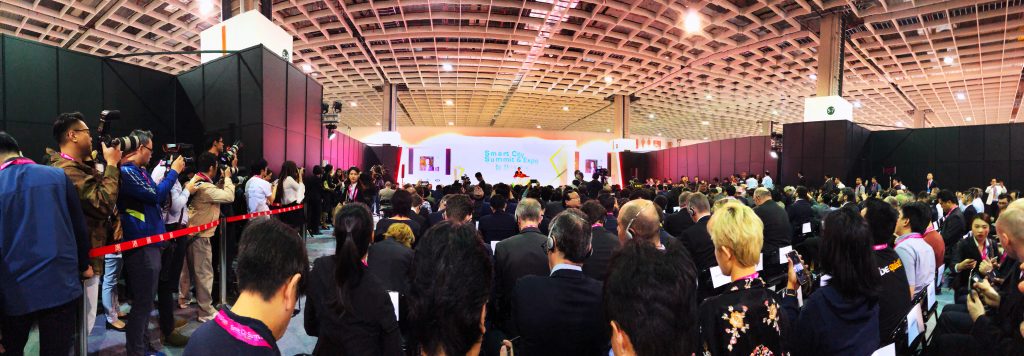 source: private archive
source: private archive
1. Mayor’s Summit Conference
Within the framework of the event there was a special conference – Mayor’s Summit – with the participation of 120 presidents of Smart Cities from 47 countries. The conference was opened by Taipei’s President, and among guests and keynote speakers there were, among others, a President and founder of ASUS as well as a President of ADVANTECH. Then, particular cities presented their smart solutions. I can proudly say that Wrocław defeated everyone – not only thanks to technical form of its presentation, but also its content – solutions already implemented in Wrocław. Bristol should also be praised due to the fact that, as a Smart City no. 1 in England, it generates 40% of UK national income. Two other Polish cities, Gdańsk and Poznań, also took part in the conference. Together with Wrocław they concluded agreements on cooperation with Taipei in the area of smart city.
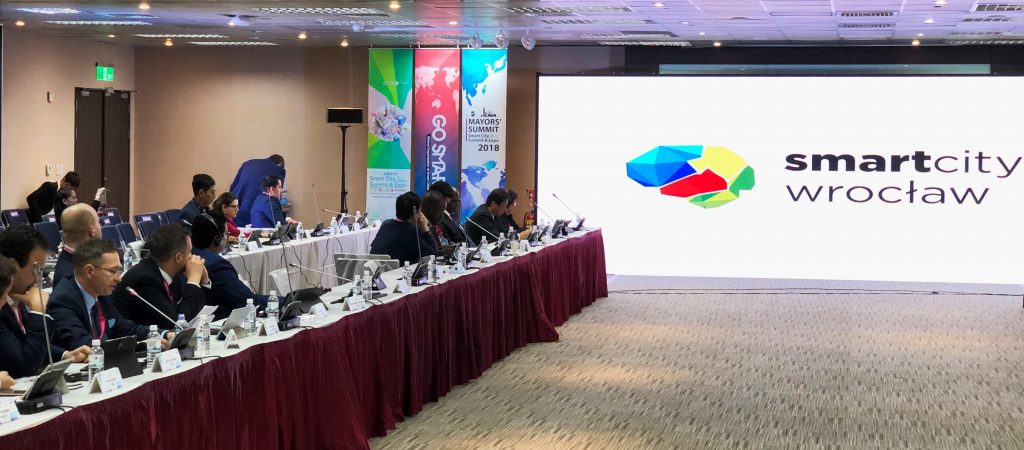 source: private archive
source: private archive
 source: private archive
source: private archive
 source: private archive
source: private archive
The trade fair was dominated by solutions connected with the application of IoT (Internet of things), VR (Virtual Reality), HBD (Human Behavior Detection), AI (Artificial Inteligence) and solutions in the area of, among others, Smart Parking, Smart School and Smart Healthcare.
2. Smart parking areas become increasingly popular
Many companies presented their solutions in the field of intelligent parking areas – beginning from payment systems, through lighting and safety systems, to applications guiding the drivers to a parking spot, enabling them to find a car in a car park or reserve a place remotely. Intelligent parking areas are one of the foundations of a Smart City – they improve the driver’s environment for functioning in the city and positively affect thoughtful use of urban areas.
 source: private archive
source: private archive
 source: private archive
source: private archive
 source: private archive
source: private archive
3. Is smart school the future of education?
An interesting approach to the subject of Smart School was presented by the head of MITAC company. According to him, smart schools should be built in the form of a smart campus consisting of, apart from the school itself and classrooms, a library and a medical care unit. Thanks to IoT solutions, the system includes also parents, teachers, administrative services and a city hall. The aim is not only to teach children compulsory curriculum subjects, but also create a community of inhabitants of a future Smart City. Thanks to cameras installed in the whole facility and HBD technology, the presence of children in school as well as their movement in the building and outside areas is registered. What is more, the doors of particular rooms are subject to strict access control.
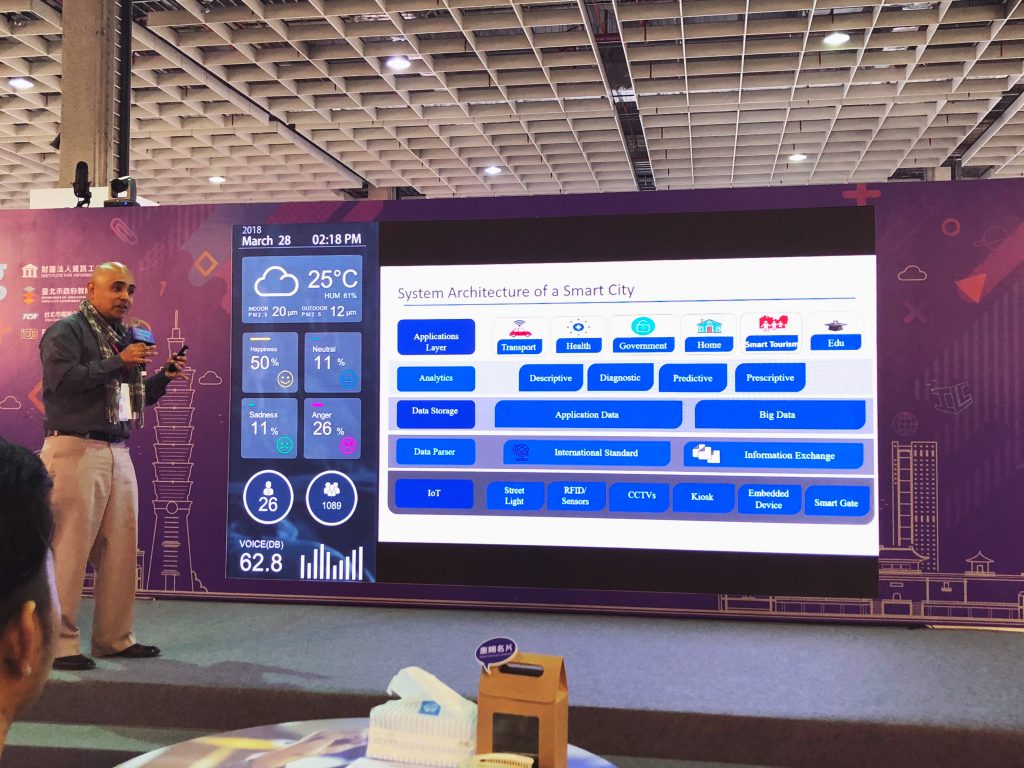 source: private archive
source: private archive
 source: private archive
source: private archive
But that’s not all – the most important thing is the application of face detection in order to analyse behaviour of children during a lesson – happy, sad, mad, neutral. This tool enables also assessment of the teachers’ work and improvement of a method of conducting a lesson. Additionally, cameras installed in the classroom enable children, who are ill or cannot be present during the classes for some reasons, to actively participate in the lesson. The whole campus community is connected to an intelligent application which provides a special, separate service for each person. Students have their own chat, a timetable, access to the library and grades as well as a task schedule.
Attention should be given to another smart solution – smart library. It’s a place where students learn how to be independent and responsible – it’s a fully automated process without typical library service.
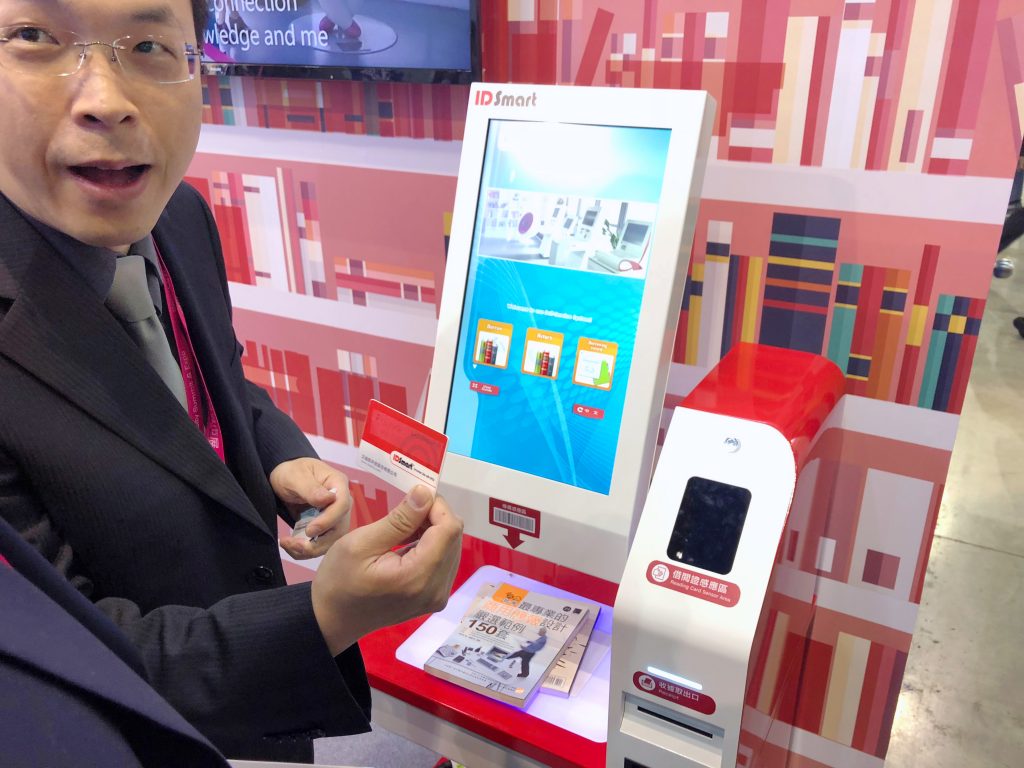 source: private archive
source: private archive
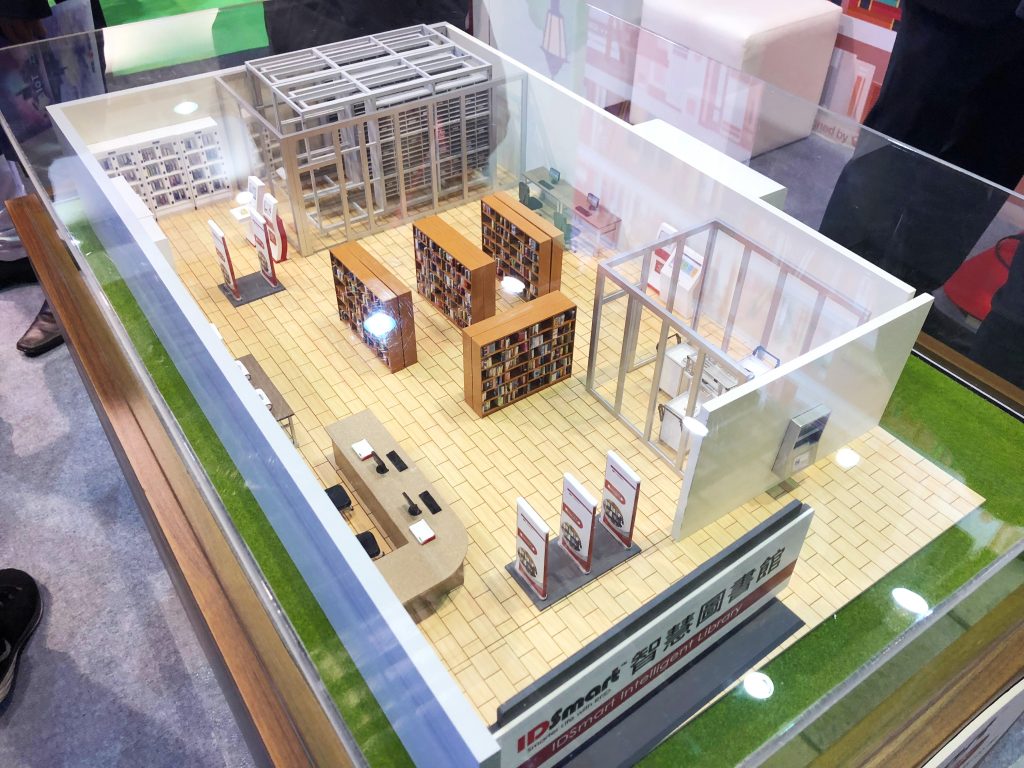 source: private archive
source: private archive
Smart campus project is brilliant to me because of three reasons:
- First of all, the school finally will be responsible not only for science education, but also for turning students into thoughtful and responsible inhabitants of a Smart City. Maybe such cities will be similar to Tokyo (I wrote about it here), where children are taught order and respect from a young age. Thanks to it, the city is perfectly clean, and respect for people (especially elderly people) and public property is a part of everyday life. Let’s remember – Smart City is not only about technologies, but also about lifestyle and way of thinking.
- Secondly – it will be possible to assess and improve the teachers’ work. This may have a great impact on traffic reduction, especially in Polish cities. Does it sound strange? Nothing of the kind. Currently at least 30% of morning and afternoon traffic is generated in Poland by parents who take their children to and from school, from one part of the city to the other one. The reason is frequently… opinions. If parents hear that a given school has a higher grade level, they don’t send their children to an educational facility in the close area, but to the one recommended by others. How is it possible, if all facilities have the same curriculum? We should drive children to the closest school. We would probably do it, if someone assured us that the teaching standard is the same in all of them. In Dubai the problem was solved by creation of British certified schools providing teaching level identical to the one presented by schools in London. The only thing Taipei project failed to address was the issue of air quality and nutritional system, which could have especially great impact on productivity and health of students in Poland!
- Thirdly – maybe we will finally get to see a cyber school in which children will be able to obtain education not leaving the house. Classes would be conducted on-line in real time, with full user interaction. There would be also a possibility of replaying the classes at any time in a passive form. I think that there are many children who, for some reasons, cannot attend classes regularly. Such formula could solve many problems.
4. Robot police officer – meet AYUDA
Taipei City Police Department presented AYUDA – a robot police officer, based on ROS (Robot Operation System), patrolling streets of Taipei. AYUDA communicates with inhabitants, answers questions and monitors the streets, thanks to installed camera systems. It recognizes faces and voice as well as detects presence of a human being. Another planned development of this smart project will be application of robots in, among others, health service.
In the times of ubiquitous terrorism, any forms of security personnel protection are welcomed. Robots could, e.g. negotiate with terrorists in a selected language, open packages and bags abandoned in the city, defuse bombs, control the traffic in case of traffic lights failure, look for people missing after explosions, detect wanted and dangerous persons on the streets. Robotization is one of the foundations of a Smart City, that’s why I’m glad that this area develops so dynamically. The future is being built before our very eyes!
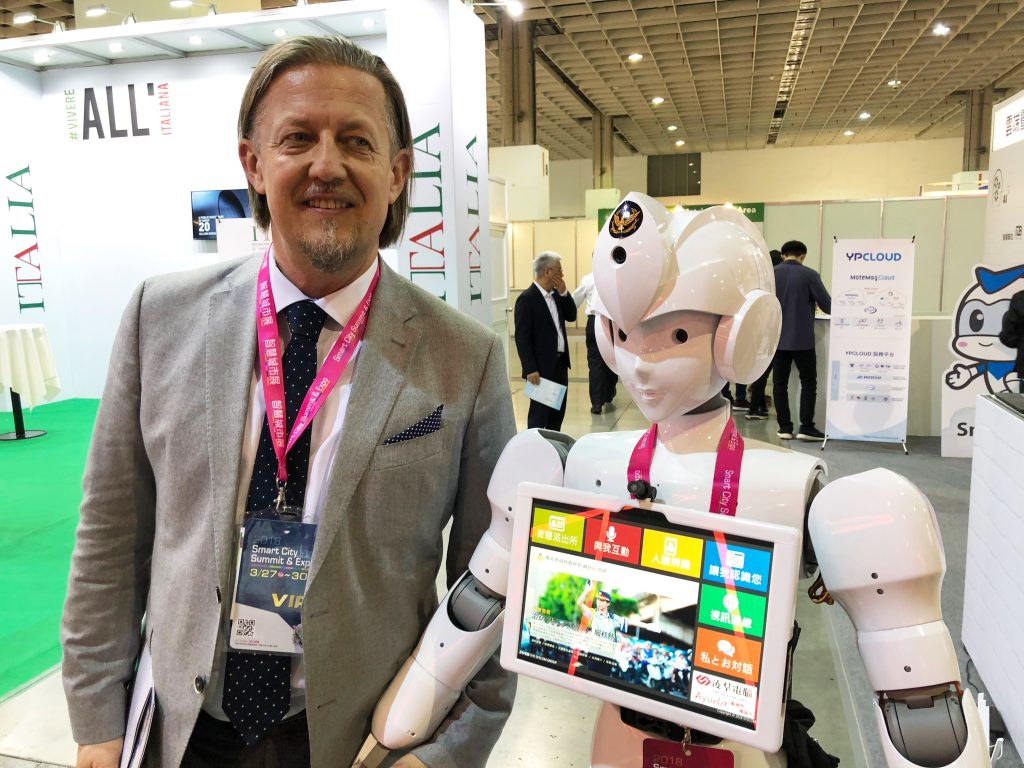 source: private archive
source: private archive
 source: private archive
source: private archive
5. Tests of the prototype of an autonomous bike
As a part of research conducted at one of Taiwanese universities, a prototype of an autonomous bike was constructed. Currently, it is being tested on the streets, or rather on bike tracks in Taipei, Boston and Paris. It moves at a low speed of 10 km/h, that is why it seems to be quite safe. A smart bike will drive a maximum distance of 5 kilometres after one charge, and it will carry passengers or packages. The vehicle has emissivity almost 5 times lower than an electric car, and more than a half lower than an electric scooter.
This crazy idea was created on the basis of a passion for scooters. Supposedly, in Taipei Smart City there is the highest number of scooters in the world! It’s not a long way from a scooter to a bike. For me, at least for now, the distance which can be covered by a charged bike is too short. I forgot to ask, whether we charged the bike by pushing its pedals? It’s an interesting idea, consideringrecent news about another fatalities caused by autonomous cars. This solution is safe. Maybe autonomous bikes will be implemented on bike tracks sooner than autonomous cars on the streets. A very interesting idea is to use a bike for delivering packages. Maybe it will become possible to combine an individual ride with delivering a package on the way at the same time?
 source: private archive
source: private archive
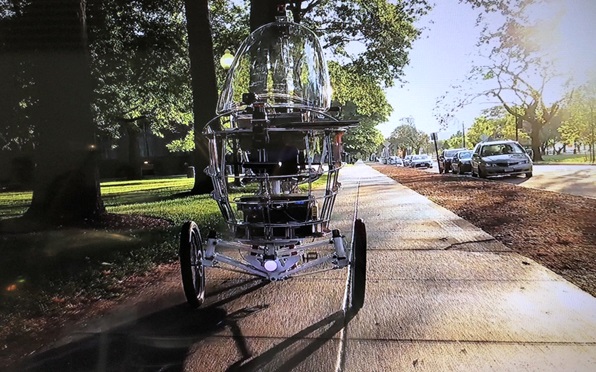
source: private archive
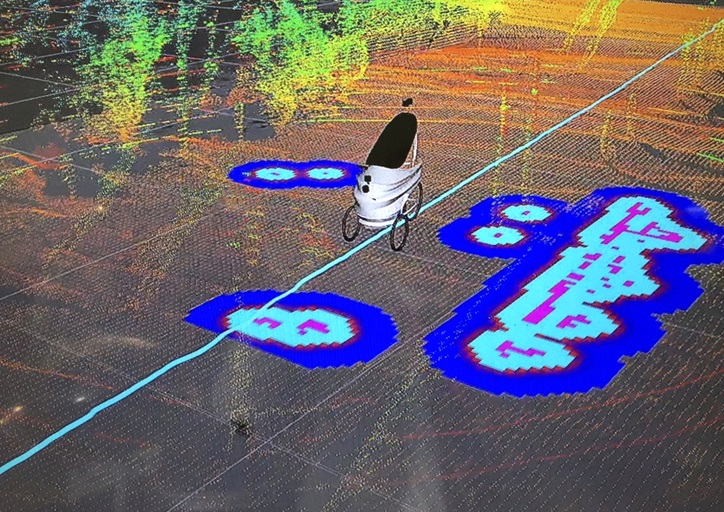 source: private archive
source: private archive
6. Virtual Reality in police and construction industry
A whole range of VR googles intended for various tasks was presented at the exhibition. Two models brought special attention.
The first one was intended for supervising construction works in 3D technology. Looking through them, one may see the location of an executed object, but with an overlay of the project in 3D version with all installations. By the way, the image seen by a person supervising the construction may be transferred online, for example to the head of a design studio or other experts who can make some common decision on the basis of a mutual conversation. The second model is intended for police and patrol groups. The googles and a camera mounted on them enable so-called human face recognition and detection. In short, a police officer may detect people with „bad attitude” after the analysis of emotions visible on the faces of passers-by and check what’s the problem (request identification), and also look for wanted persons.
I can see a broader application of this device, for example, while defusing some explosives by persons who do not have experience. Such googles would be controlled (“guided”) by experts from any place in the world, thanks to on-line broadcast from a hazardous area. The same on-line broadcast could be used in the case of municipal services who would consult and repair things about which they do not have any idea after arrival to the place of failure. The lack of necessity to complete the team of experts during each failure would significantly reduce the costs of the service team as well as optimise its work, which would result in reduction of the time needed for intervention expected by residents.
 source: private archive
source: private archive
 source: private archive
source: private archive
In the case of a „construction” model, it is an excellent improvement of work at the construction site. At the moment, the drawings plotted most frequently during construction work are the ones used by a majority of managers and inspectors at the construction site. Sometimes they use tablets to quickly check the documentation. However, the bigger problem is the fact that few projects are created in 3D format, which is the basis for the application of cooperation with VR googles. Unfortunately, clients who are investors still do not appreciate a good, detailed and unobstructed project which allows 3D format, and don’t want to pay for it. In this situation a general contractor invests in such project only in the case of very complicated projects, believing that in the end he will make money on shorter execution deadline, thanks to avoidance of many project collisions at the construction site.
7. Health in the era of Smart Cities
At the trade fair there was presented a whole range of small detection devices which enable constant heart rate monitoring, if they are combined with a relevant smartphone or smartwatch application and a service and analytical cloud platform. This may be useful in many situations, especially in the case of elderly people or people with arrhythmia, the ones who require constant monitoring, but also in the case of people who do sports professionally and as a hobby.
It all sounds trivial for a global novelty, but when we get into details, we find out that people who do yoga may use a set of sensors which enable controlling movements in reference to 9 angles of body position. We can monitor, whether our asana is relevant to the position we want to take, we can see the whole plan of self-improvement for each figure, analysis of heart rate and breath regularity combined with monitoring, statistics of any deviations and so-called HRV, that is the assessment of stress level during the classes. Similar, highly advanced solutions may be used by people who do fitness and by runners. They can use the function which corrects our activities in real time and communicates what is done wrong. I think that it will be more interesting to say, that the devices are dedicated also to pregnant women and office workers. Future mothers will be equipped with 9 angle movement sensor recommending appropriate positions and a sensor detecting distances covered indoors and outdoors with a tracking illustration, without connecting to the GPS system. Office workers’ working time, movement, sitting position and, of course, the assessment of the level of stress, are also analysed.
 source: private archive
source: private archive
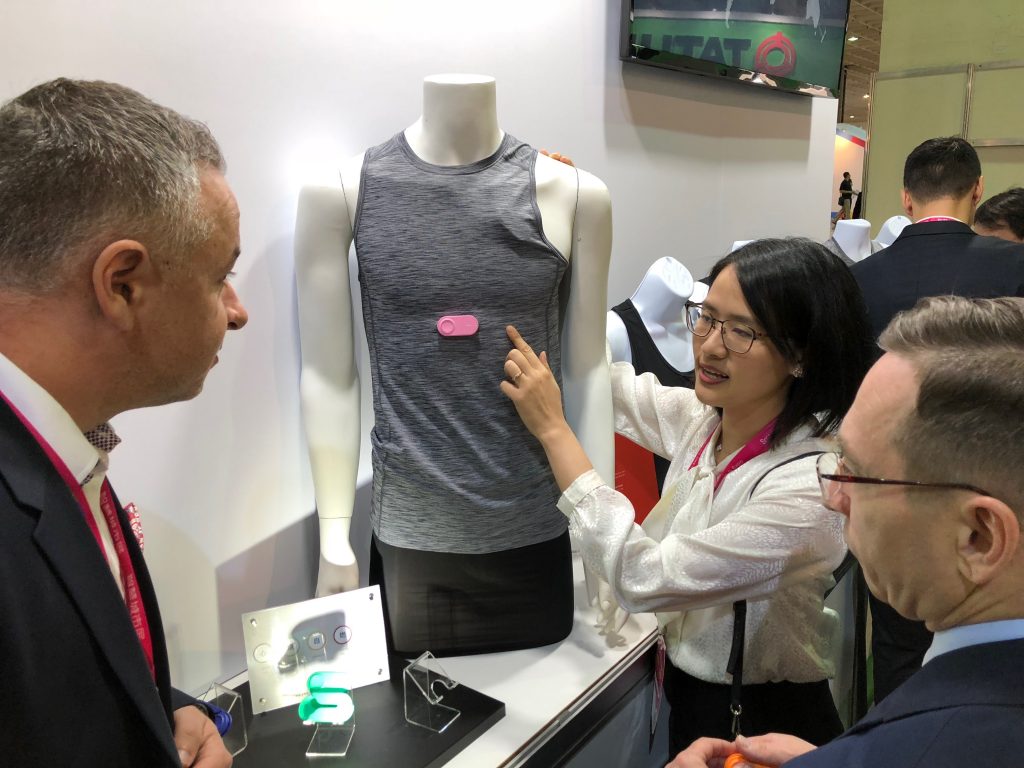 source: private archive
source: private archive
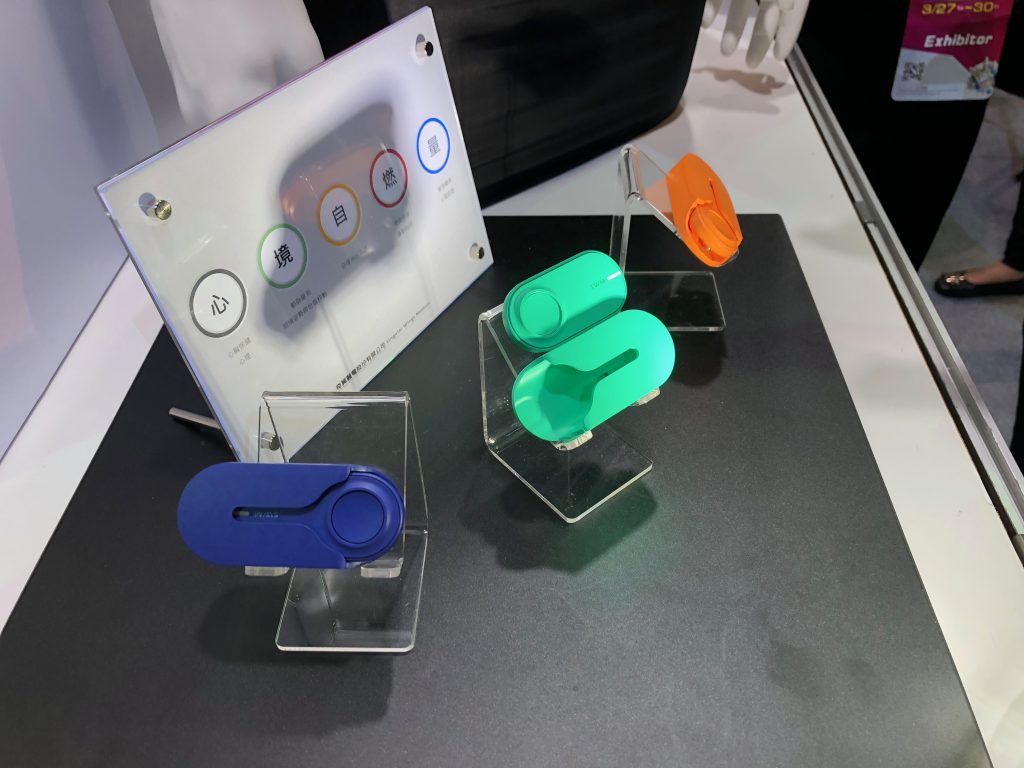 source: private archive
source: private archive
It all seems complicated, so the question remains, whether we can just run for pleasure without all these sensors, applications and headphones with music? Maybe we can, but improvement requires the assessment of progress and recommendations for subsequent training plans. Apart from that, we may harm ourselves, unless we realise that our heart rate is similar to the one experienced during a heart attack. In the end, there is one more case, I guess the most important one, and it is motivation. Without all these analyses of progress we will always lack motivation. With regard to the smart city project – I think that it has more advantages, when it comes to health care for elderly people, whose number increases, and life expectancy gets longer each year. There is a huge number of people who require constant heart rate monitoring and remain bedridden because of it, although they are non-disabled. There are also people with impaired memory. Such device may help find them or help them find their way home. In the era of increased concern for health and productivity of workers, a discussed solution may help an employer analyse the employee’s stress level affected by, for example mismatch of duties, work mode and work position to physiological and mental capabilities of an employee. However, I’m only interested, how does it relate to the new provisions soon to be introduced in the area of personal data protection, so-called GDPR?
8. Summary
It was a wonderful promotion of Taiwan as one of the most technologically advanced countries in the world. 80% of computers, 40% of smartphones and 90% of routers are produced here! It’s a pity that our government sends to such international conferences organised in Poland only its less important representatives, demonstrating that it is not very interested in this subject and promotion of Poland as a country of not only smart people, but also smart cities, a country which bases its development on technological innovations. In Poland it is only a curiosity, whereas in Taiwan it is a business of today.

